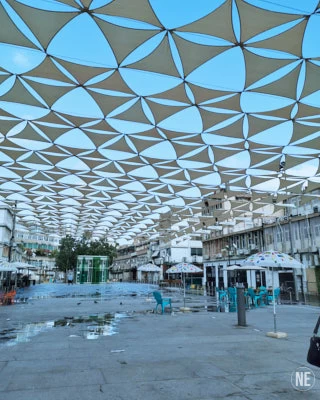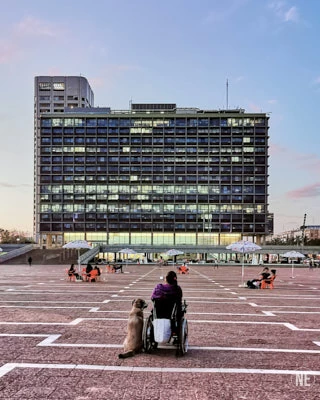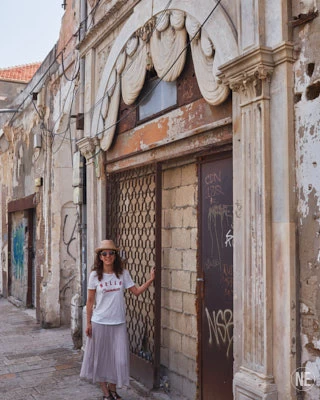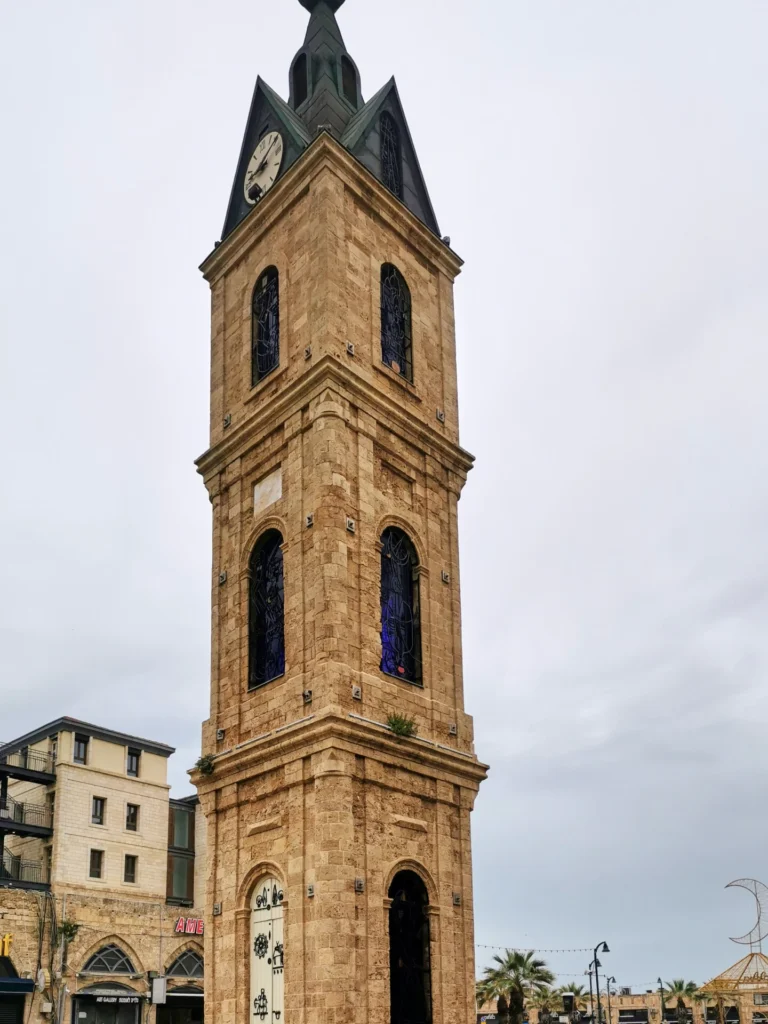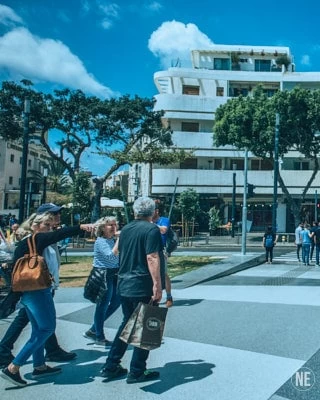This spot serves as a gathering place for various local events, including sports events, fairs, festivals, protests, and official ceremonies.
Originally known as “Kings of Israel Square,” it was renamed “Rabin Square” in memory of Prime Minister Itzhak Rabin, who was tragically assassinated there on November 4, 1995. The square and Tel Aviv City Hall were established in 1964. As the largest open area in the city center, it regularly hosts large-scale events and political demonstrations.
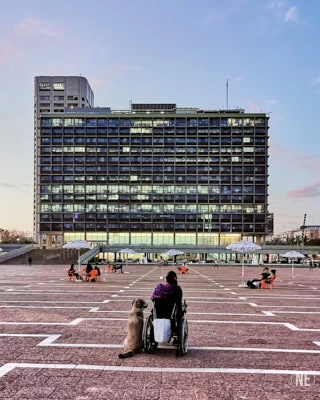
Main Travel, Information
The square is adjacent to Ibn Gvirul Street, which runs through Tel Aviv from south to north. To the east of the city hall, Ben Gurion Boulevard stretches to the sea. Towards the south, there’s a connection to Fishman Street and Masrik Square, just a five-minute walk uphill to Habima Square and the Cultural Center Hall (Heichal Hatarbut).
This open arena offers little shade, so on hot days, bring a hat and sunglasses. You can find shelter from the sun in one of the streets surrounding the square. If you visit on a rainy day, consider bringing an umbrella, and afterward, treat yourself to one of the nearby restaurants.
Insider tip: A free restroom is located within a one-minute walk at the nearby “City Garden” mall.
It’s easy to get there by all types of transit:
| Bicycle | You can easily rent a bicycle through Tel-O-Fun, a company that offers 2000 bikes stationed throughout Tel Aviv. There’s a convenient pickup station located in Rabin Square. For more information and details, visit their website at www.tel-o-fun.co.il. |
| Bird Scooter | You can find a variety of electronic scooters can use the “Bird” app. |
| Bus lines close by | The most frequent are lines 189/289 and 24,25. It will take you from north to south easily in Tel Aviv |
| Car | Getting to Rabin Square by car is convenient, but finding parking can be challenging and costly. For budget-friendly options, consider parking at the Dizengoff Center underground parking lot. It costs 19 NIS for the first hour, and the second hour is free. After that, it’s 12 NIS per hour or 70 NIS for 12 hours. Alternatively, you can park at the “City Garden” parking lot, which charges 20 NIS per hour or 90 NIS for 12 hours. |
| Taxi | Use a cab. Local’s tip: use the “Get Taxi” app. if you pick up an empty taxi, it might not stop for you as it has been booked in advance. |
| Walking | If the weather allows, that is the best choice to explore Tel Aviv and Jaffa. Tel Aviv Rabin Square arrival options |
What Will You See In The Square?
At the heart of the square, you’ll find captivating exhibitions, including two ancient olive trees, an ecological pond, a serene fountain pool, and a poignant monument commemorating the Jewish Holocaust during World War II. Towering over the square is the imposing structure of Tel Aviv City Hall. Stroll towards the north, along Ibn Gabirol Street, and you’ll encounter the solemn monument dedicated to the memory of former Prime Minister Mr. Itzhak Rabin.
The Ecological Water Pool
The ecological water pool offers a serene oasis amidst the bustling city. Take a moment to observe the vibrant fish gracefully swimming within its depths, and feel a sense of tranquility wash over you. Renovated in 2010, this natural gem provides a peaceful retreat in the heart of the urban landscape.
The City Hall
Designed in the modernist Brutalist style by architect Menahem Cohen, the Tel Aviv City Hall stands tall at approximately 60 meters in height. Its imposing presence dominates the skyline, drawing the eye of passersby. The main entrance, accessible from Ibn Gabirol street, leads visitors up via escalators to the main floor. Since 1966, this iconic building has served as the administrative hub of Tel Aviv, marking a shift from its original location in Habima Square.
The Holocaust Monument of Remembrance
At the square’s southern end stands a striking monument known as “Holocaust and Revival,” crafted by the renowned artist Igael Tumarkin. This imposing structure is an inverted pyramid, resembling a Magen David (a Jewish symbol) when viewed from above. However, from street level, it appears as a series of prison bars, symbolizing the confinement and captivity experienced by Jews during World War II.
Adjacent to this solemn memorial stand two ancient olive trees, symbolizing the deep-rooted connection of the Jewish people to the land of Israel. The deliberate placement of the monument next to these trees is significant, representing the enduring hope and resilience of the Jewish people. Behind the metaphorical prison bars, they gaze outward toward their ancestral homeland, Israel, with a vision of liberation and a longing to return to their roots.
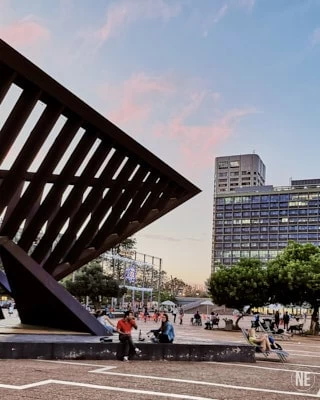
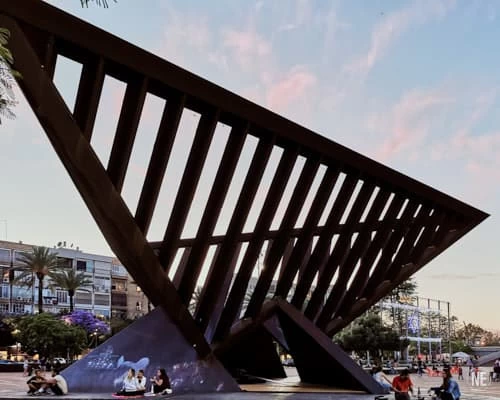
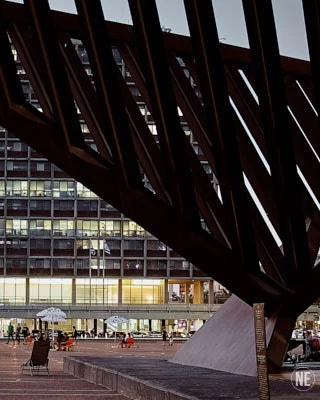
History | Did You Know That There Was A Zoo In Here?
From 1938 to 1981, the area that now houses the Gan Hayir (City Garden) Mall was home to an old zoo, featuring elephants, flamingos, lions, and more. When the zoo closed, most animals were relocated to the Ramat Gan National Zoo.
Today, the shopping promenade at Gan Hayir Mall offers a great indoor option for a visit, especially if the weather isn’t favorable. Additionally, there is an upper hidden garden and a local coffee shop to explore and enjoy.
Insider tip: Check the municipality website for free yoga classes or other activities occasionally held on the rooftop of Gan Hayir Mall: www.tel-aviv.gov.il.
Itzhak Rabin Memorial
In the past, the square was a central gathering place for demonstrations and public events. Tragically, it was also the site of the assassination of Itzhak Rabin, who was killed after delivering a speech during a local demonstration for public security. The words “Goodbye friend” in Hebrew (Shalom Chaver) are inscribed on the wall, a poignant reminder of Rabin’s legacy. These words, spoken by Bill Clinton at Rabin’s funeral, echo from stickers on the wall, serving as a reminder of a time when peace seemed both within reach and elusive.
The memorial comprises three exhibitions. The first features a metal sculpture of Yitzhak Rabin’s face, paying tribute to the late leader. The second exhibition showcases a monument made of black stones, symbolizing remembrance and reverence. Lastly, the third section displays a wall adorned with old advertisements and photos from the peace agreements signed by Rabin, along with a graffiti drawing positioned in front of the stairs leading to the city hall balcony.
The Memorial Monument
The memorial, crafted by Yitzchak Rabin’s granddaughter, the artist Yael Arzi, symbolizes the seismic impact of the assassination, using 16 blocks of basalt stones from the Golan Heights. This tragic event marked a seismic shift in Israeli society, as it was the first time an Israeli citizen had assassinated a prime minister. The aftermath intensified societal tensions and prompted a deeper examination of the relationship between Jewish and other minority communities in Israel.
As you explore the area around the monument, you’ll notice signs on the ground marked with circles and arrows. These indicators highlight the precise locations where Rabin, his security guards, and his assassin were positioned at the time of the shooting. You may be surprised to see how close the assassin was to Rabin. Following the attack, Rabin was rushed to Ichilov Hospital nearby, where he was pronounced dead.
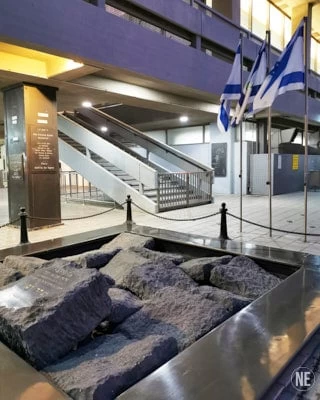

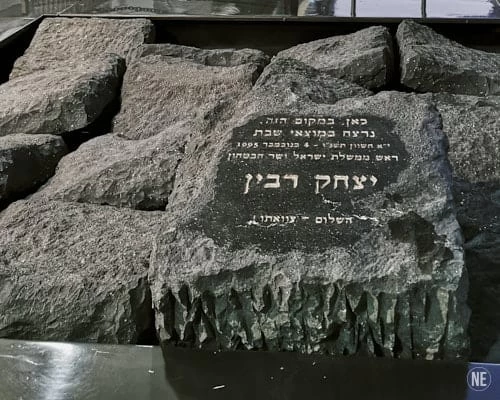
| 1964 | The square was made as part of the original urban plan |
| 1981 | Shutting down the nearby old city zoo |
| 1994 | The square name has altered in memory of Yitzhak Rabin. |
| 2010 | The ecological water pool was refurbished |
Demonstrations
This central location is a hub for individuals and groups to express their opinions and stage demonstrations.
Given its prominence, demonstrations held here often attract media coverage, amplifying the message and reaching a wider audience.
In 2010, amid renovations in the main square, significant protests erupted across Tel Aviv over the high cost of living in Israel. Initially centered on Rothschild Blvd, these demonstrations eventually spread to various locations throughout the city.
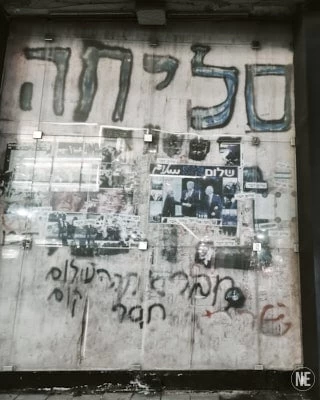
Day of Independents Celebrations
If you find yourself in Tel Aviv during Independence Day in May, don’t miss out on the festivities at Rabin Square! The events kick off around 8:00 PM and continue late into the night. It’s the perfect spot to kickstart your evening, catch up with friends, and witness the dazzling fireworks display (though it can get a bit crowded).
A word of caution: watch out for kids running around with foam spray and hammer-shaped balloons, adding a playful twist to the cultural celebration!
National Book Fair
In Israel, in June, an annual National Book Fair is held in Tel Aviv to celebrate “Matan Torah,” the day when Jewish tradition holds that the Torah was received on Mount Sinai. The main event takes place in Rabin Square, where you can browse a wide selection of books at affordable prices throughout the week. This long-standing tradition dates back to 1925 and has since grown, attracting numerous Israeli book publishers.
If you’re in Israel during June, be sure to check the exact dates of this event so you don’t miss out! Additionally, Rabin Square hosts various public events organized by the municipality or private societies throughout the year, offering something for everyone to enjoy.
What To Eat
Around the main square, you’ll find many coffee shops, restaurants, and wine bars, catering to diverse tastes and preferences. Stroll down Frishman Street for various dining and drinking options, or explore Ibn Gabirol Street for various culinary delights.
For a memorable dining experience, we recommend Brasserie, a popular spot among residents, or Hanoi, a Vietnamese restaurant known for its kosher cuisine. If you want a lighter option, head to Bakery or Abulafia bakeries for freshly baked French pastries.
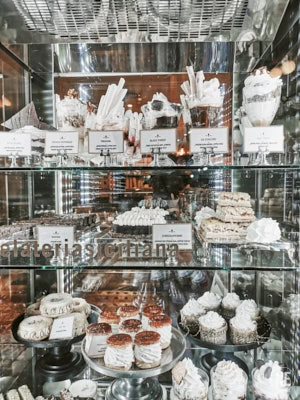
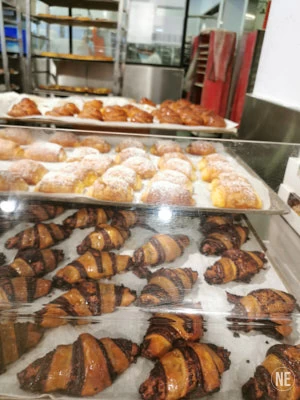
Long Exploring
Rothschild Boulevard is a haven for Bauhaus architecture enthusiasts. Follow it straight to reach Habima Square, Israel’s cultural center. Continuing, you’ll arrive at Hen Boulevard, which leads directly to Rabin Square. Hayarkon Park is another gem ten minutes from the bustling Tel Aviv center. Explore this picturesque park with a river that flows to the sea for a tranquil escape from the city. Visiting Rabin Square should be on your to-do list. It’s a significant landmark in Tel Aviv, rich in history and cultural importance. Whether you’re interested in paying respects at the memorial, attending public events, or simply soaking in the atmosphere of this central square, it’s an experience worth having during your time in the city.
